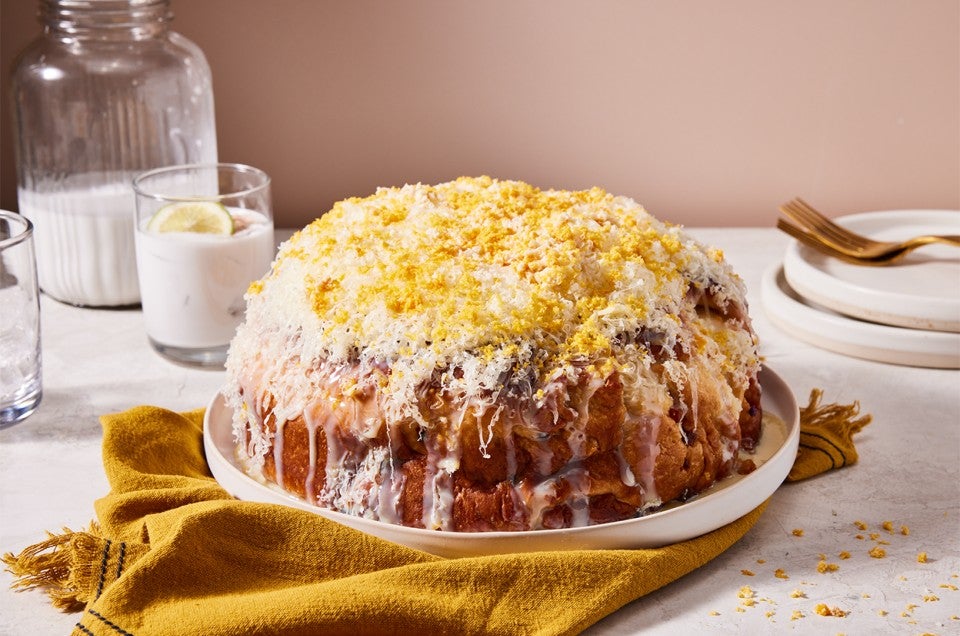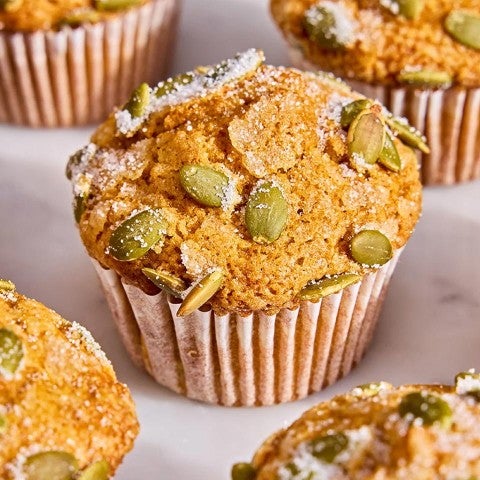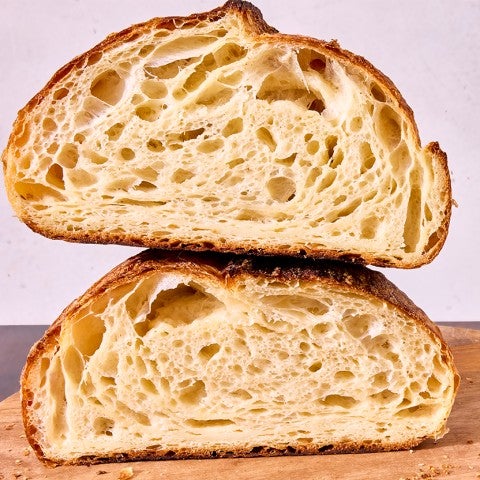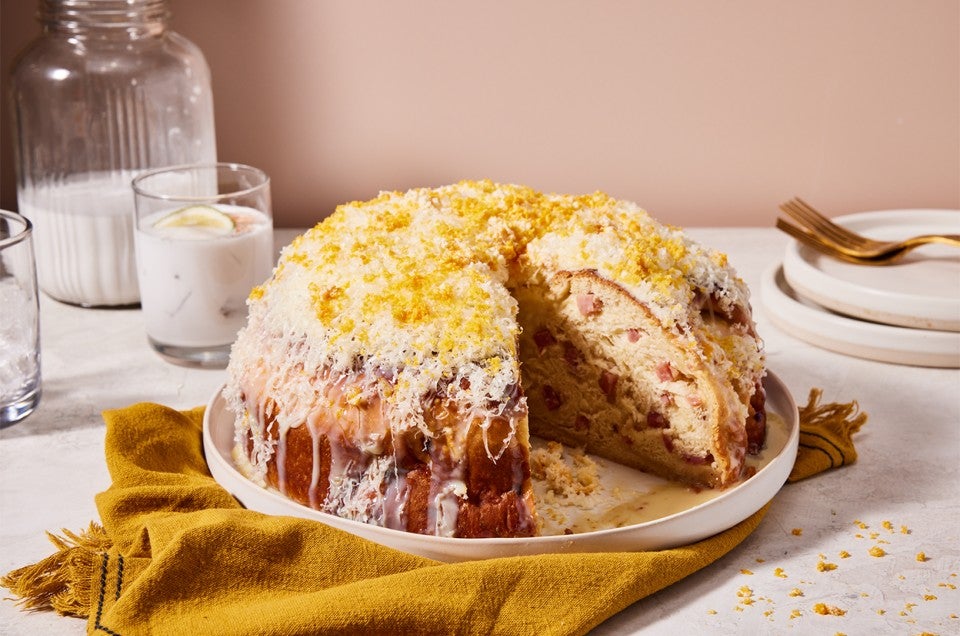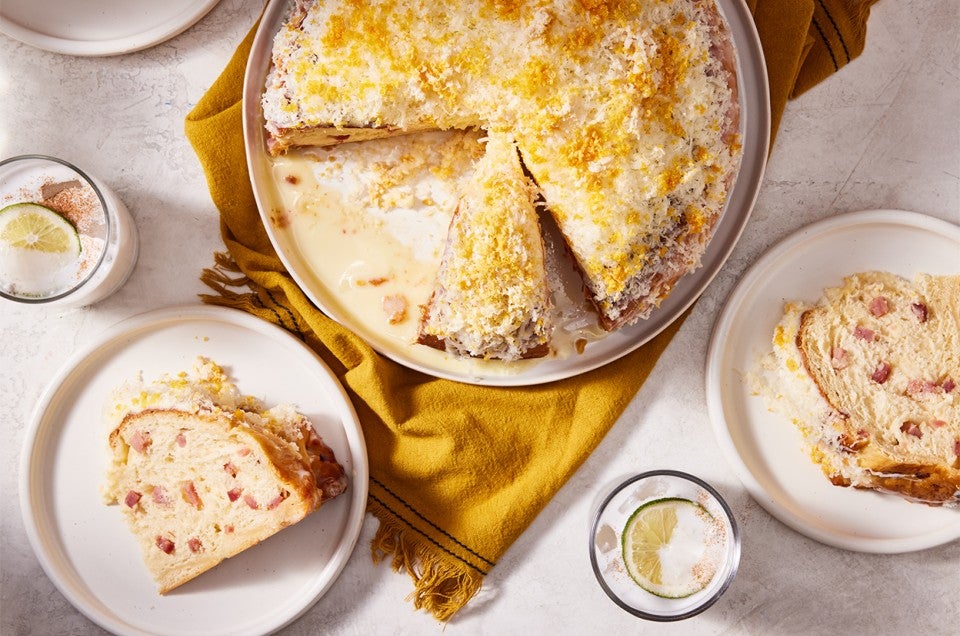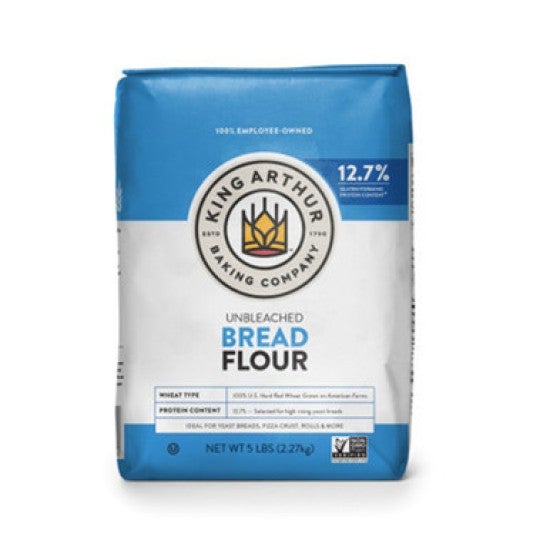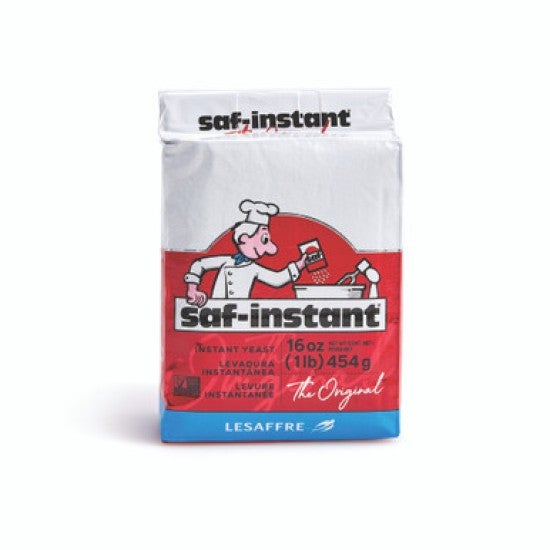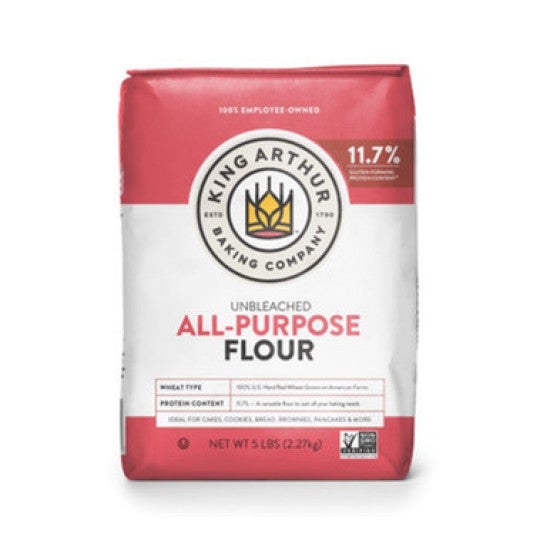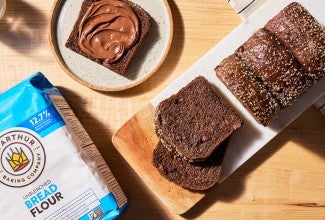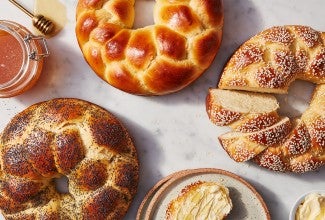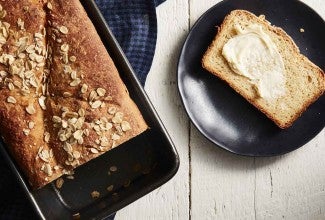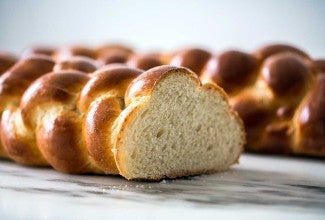-
To make the dough: Weigh your flour; or measure it by gently spooning it into a cup, then sweeping off any excess. In the bowl of a stand mixer fitted with the dough hook, combine the flour, sugar, yeast, and salt.
-
In a small saucepan over low heat, warm the evaporated milk, water, and butter until the mixture is about 100°F. Stir to fully melt the butter. (Alternatively, combine the ingredients in a medium microwave-safe bowl and heat at 50% power in 20-second intervals until the butter is melted, about 100°F.)
-
Add the liquid to the flour mixture and mix for 1 to 2 minutes, until the dough looks shaggy. Cover, then let the dough rest for 10 minutes.
-
Add the mashed potato and egg yolks to the mixing bowl and mix on low speed to combine for 1 minute. Once the dough forms, increase the speed and knead for 10 minutes, until the dough is soft and smooth. Stop and scrape down the sides of the bowl and the hook as needed.
-
Place the dough in a greased bowl or standard dough-rising bucket, cover, and refrigerate overnight (up to 24 hours).
-
When ready to assemble, remove the dough from the refrigerator and allow it to warm to room temperature for about 30 to 60 minutes.
-
To fill the ensaymada: Lightly spray a 9" springform pan or line it with a 9" parchment round. Set it aside.
-
On a clean surface, roll the dough to a 19" x 14" rectangle. Spread the softened butter all over the surface of the dough, then sprinkle the granulated sugar on top, followed by the diced ham; the fillings can go all the way to the edges.
-
Starting with a long edge, roll the dough into a log (like you were making cinnamon rolls). Pinch the ends and seam to seal the filling inside, then curl the log into a spiral shape. Transfer the spiral, seam-side down, to the prepared pan.
-
Cover and allow the giant ensaymada to rise until it’s nearly doubled in size, about 45 to 60 minutes. It’s OK if the spiral uncoils a little during the rise. Preheat the oven to 350°F.
-
Place the springform pan on a baking sheet and bake for 35 minutes, then cover the top loosely with foil to prevent the ensaymada from becoming too dark. Bake for another 25 to 30 minutes, until golden brown and the internal temperature reaches at least 190°F when tested with a digital thermometer.
-
Remove the ensaymada from the oven and allow it to cool completely in the pan on a wire rack.
-
To finish the ensaymada: About 30 minutes before serving, place the salted red egg in the freezer (this makes it easier to grate).
-
Just before serving, unmold the bread from the springform pan and transfer it to a large plate. Pour the sweetened condensed milk all over the top and then use a small offset spatula or the back of a spoon to spread it evenly, sprinkle with the queso de bola, and grate the salted egg on top. Slice the ensaymada into wedges and serve at room temperature.
-
Storage information: Store any leftover ensaymada, covered, at room temperature for 2 days; freeze the un-topped bread for longer storage.
